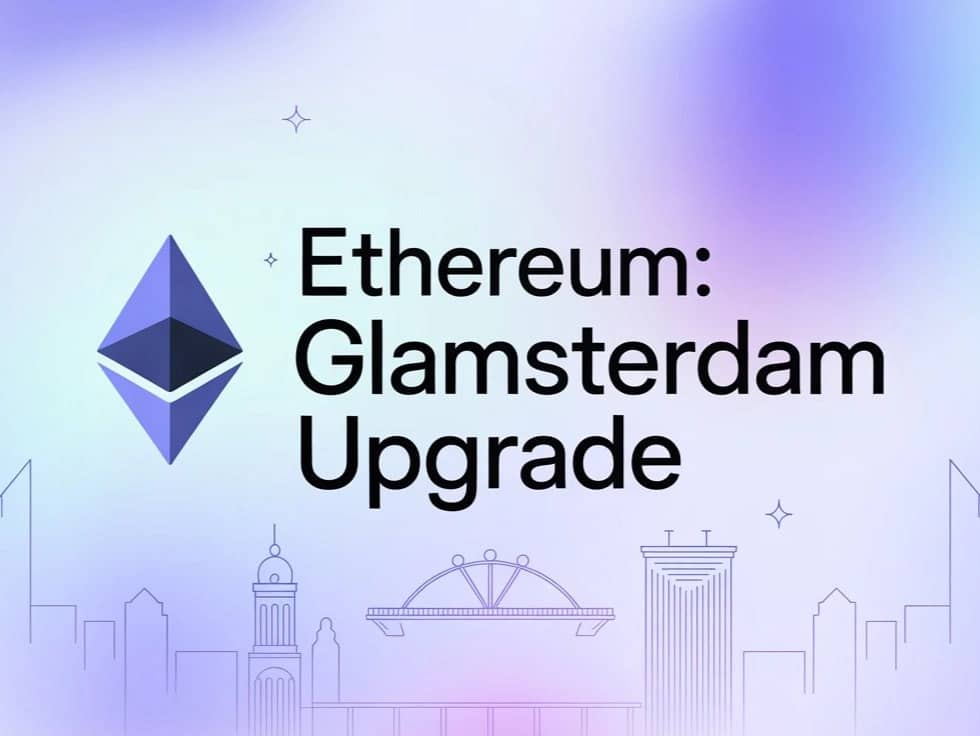위키 구독하기
Share wiki
Bookmark
Ethereum Glamsterdam Upgrade
Ethereum Glamsterdam Upgrade
Glamsterdam(글램스터담)은 확장성, 보안, 지속가능성을 향상시키도록 설계된 이더리움 Ethereum 블록체인의 주요 네트워크 업그레이드입니다. 이는 Fusaka 업그레이드를 잇는 실행 계층(EL) 업그레이드 제안으로, 가스 최적화 및 프로토콜 수준의 효율성 개선에 중점을 둡니다. "Glamsterdam"이라는 이름은 별 Gloas와 최근 Devconnect 이벤트가 개최된 도시인 Amsterdam을 결합하여 만들어졌습니다. [1]
개요
Glamsterdam은 네트워크 확장성 및 높은 거래 수수료와 같은 지속적인 문제를 해결하고자 하는 이더리움 Ethereum의 지속적인 발전에서 중요한 단계를 나타냅니다. 이 업그레이드는 Pectra 및 Fusaka 업그레이드와 같은 이전의 이정표를 포함하는 광범위한 로드맵의 일부이며, 모두 이더리움의 글로벌 컴퓨팅 플랫폼으로서의 장기적인 비전에 기여합니다. 이더리움 재단은 연구 개발 부서를 Tim Beiko와 Ansgar Dietrichs와 같은 베테랑이 이끄는 더욱 효율적이고 집중적인 기관인 "Protocol"로 재편했습니다. 이러한 재편성은 계층 1 (L1)의 확장, 블롭스페이스 확장 및 사용자 경험(UX) 개선을 우선시하며, 이는 Glamsterdam의 예상되는 우선 순위와 직접적으로 일치합니다.
Glamsterdam의 개발 방식은 안정성과 철저한 테스트를 강조하며, 블록체인 개발의 반복적인 특성을 반영합니다. 이러한 노력은 새로운 기능이 강력하고 네트워크의 광범위한 로드맵에 잘 통합될 수 있도록 보장합니다. Glamsterdam의 성공적인 구현은 향상된 네트워크 효율성을 통해 투자자에게, 새로운 기능과 도구를 통해 개발자에게, 그리고 더욱 안정적이고 안전하며 비용 효율적인 경험을 통해 사용자에게 이익을 제공하여 전체 이더리움 생태계에 상당한 영향을 미칠 것으로 예상됩니다. [2] [3] [7]
명명 규칙
이더리움 Ethereum 네트워크 업그레이드는 일반적으로 다양한 출처에서 이름을 따오며, 종종 합의 계층(CL) 업그레이드에는 별 이름을, 실행 계층(EL) 업그레이드에는 도시 이름을 결합합니다. 역사적으로 Devcon 도시가 업그레이드 명명에 사용되었습니다. 그러나 Devcon이 격년 행사가 되면서 Amsterdam과 같은 Devconnect 도시 이름이 연례 업그레이드에 사용되고 있습니다. Glamsterdam의 경우, G-스타인 "Gloas"와 최근 Devconnect 이벤트를 개최한 도시인 "Amsterdam"을 결합하여 이름을 지었습니다. 이 명명 규칙은 메타 이더리움 개선 제안(EIP-7773: 하드포크 메타 - Amsterdam)의 일부입니다. [1]
개발 로드맵
Glamsterdam 업그레이드는 2025년 11월 초 메인넷 배포가 예정된 Fusaka 업그레이드의 후속으로 자리매김하고 있습니다. 이더리움 Ethereum 코어 개발자들은 기능 선택부터 메인넷 활성화까지 여러 중요 단계를 포함하는 Glamsterdam에 대한 자세한 로드맵을 제시했습니다. 이러한 구조화된 접근 방식은 네트워크의 원활하고 안전한 전환을 보장하는 것을 목표로 합니다. [4] [5]
헤드라이너 선택 단계
초기 단계에는 Glamsterdam의 주요 초점을 정의할 "헤드라이너" 기능을 선택하는 것이 포함됩니다. 클라이언트 팀은 포함할 잠재적인 이더리움 개선 제안 (EIP)에 대해 적극적으로 논의하고 범위를 좁혀왔습니다. 2025년 7월 말과 8월 초 현재, 주요 후보에는 블록 수준 액세스 목록과 포크 선택 포함 목록(FOCIL)이 포함됩니다. 이러한 제안은 계층 1 (L1) 스캐닝 효율성을 향상시키거나 상태 팽창 복원력을 개선하여 업그레이드의 주제 방향을 형성하는 것을 목표로 합니다. [4]
제안 마감일 및 사양 고정
범위 확장을 방지하고 시기 적절한 진행을 보장하기 위해 헤드라이너 선택을 마무리하고 정기적인 EIP를 제출하기 위한 엄격한 마감일이 설정되었습니다. 2025년 8월 21일로 설정된 이 마감일은 개발자가 네트워크가 엄격한 테스트 단계에 진입하기 전에 포함된 모든 EIP를 병합, 감사 및 문서화할 수 있도록 합니다. 이러한 규율 있는 접근 방식은 주요 블록체인 업그레이드의 복잡성을 관리하는 데 중요합니다. [4]
테스트 및 감사 기간
Glamsterdam의 출시 프로세스는 2025년 말에 고정된 사양을 반영하는 전용 클라이언트 릴리스 브랜치를 생성하는 것으로 시작됩니다. 2026년 초에는 하나 이상의 공개 테스트넷을 출시할 계획입니다. 이러한 테스트넷은 현실적인 네트워크 조건에서 상호 운용성 문제를 식별하고 더 넓은 커뮤니티 참여를 위해 중요하며, dApp 개발자, 노드 운영자 및 연구원이 새로운 변경 사항에 대해 애플리케이션과 인프라를 테스트할 수 있도록 합니다. 테스트넷 단계 이후에는 보안 감사 및 커뮤니티 버그 사냥을 위해 30일 기간이 두 번 할당되며, 이는 Fusaka 업그레이드 중에 성공적으로 사용된 모델입니다. 이러한 포괄적인 테스트 및 감사 프로세스는 메인넷 활성화를 결정하기 전에 네트워크의 복원력을 보장하고 필수적인 개발자 피드백을 수집하도록 설계되었습니다. [3] [4]
잘못된 내용이 있나요?
